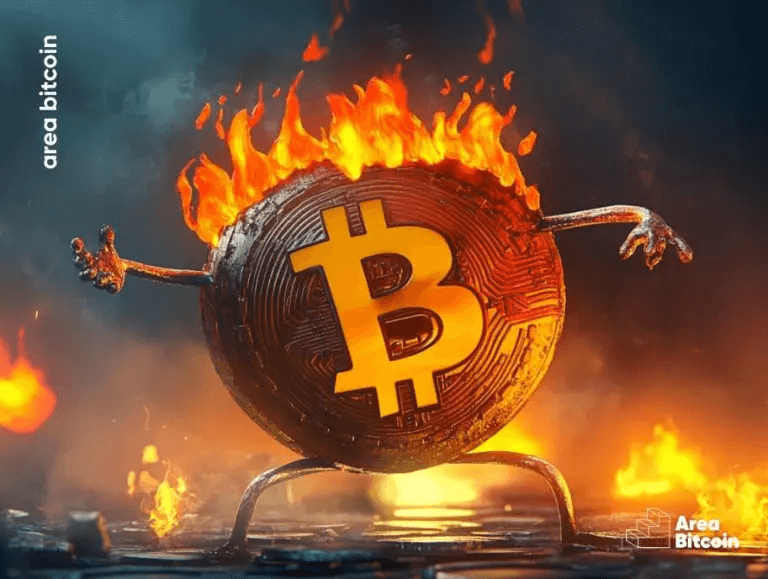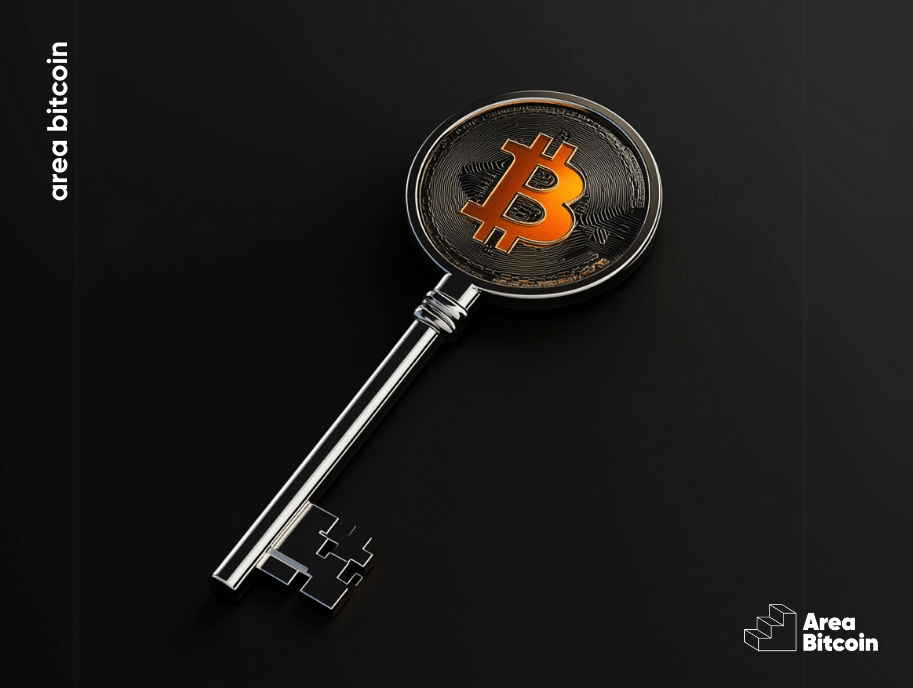Years ago, behavioral economics scientists like Richard Thaler, who won a Nobel Prize, identified nonsensical behaviors we sometimes engage in without even realizing it.
This often occurs because most people can’t completely detach their emotions from financial decisions. However, the good news is, that once you’re aware of this, it’s much easier to avoid these mistakes.
Although Thaler is associated with Warren Buffett, a well-known Bitcoin skeptic, human behavior remains consistent across different forms of money. Thaler’s insights into human financial behavior can help you avoid transferring irrational habits from your fiat money dealings to Bitcoin.
In this article, we’ll discuss the 5 biggest foolish mistakes people make with Bitcoin.
5 mistakes people make with Bitcoin:
1. Endowment Effect
The first foolish mistake you might not even realize you’re making often occurs among those who jumped into Bitcoin during its boom.
These people discover the thousands of other cryptocurrencies available and end up purchasing small amounts of each, usually when they are overpriced and close to their peak.
Then, when the bear market hits, they continue to hold these altcoins, believing they are very valuable and will be worth much more in the next cycle. This is known as the endowment effect—a psychological bias where people assign more value to something simply because they own it.
However, history has shown that, when priced in Bitcoin, these altcoins never reach new highs in subsequent cycles.
Despite this, many people still hold on, hoping the price will rise again. This has been the case with all altcoins, including Bitcoin Cash, Litecoin, Ethereum, and Polygon, to name a few.
There are so many that it would take hours to list them all.
None of them have achieved a new high relative to Bitcoin after their initial cycle. Yet, people fall for these pump-and-dump tokens, believing them to be revolutionary, and miss the opportunity to study and accumulate Bitcoin instead.
Maintaining a portfolio of these altcoins is completely irrational, as they are projects that are not decentralized and consistently lose value compared to Bitcoin.
Many continue to hold due to the endowment effect, which is closely linked to the pain of loss. It often feels much more painful to part with something at a loss than the initial pleasure of purchasing it. It also involves accepting that you were wrong about the investment and that what seemed promising was actually a significant mistake.
However, holding onto these shitcoins will not help you recover your investment. Deep down, you were essentially gambling in a disguised casino, thinking you were buying a valuable asset when you were actually betting without realizing it. You were paying for the thrill of the game, not for any real value the altcoin might have, which, in reality, is zero.
2. Sunk Costs
Here comes the second foolish mistake people make with Bitcoin: clinging to sunk costs.
Have you ever felt like you’ve invested too much to just give up? That’s the essence of this mistake. You continue to pursue a losing strategy even though you know it will likely lead to greater losses.
Persisting with declining altcoins only amplifies the loss and pain. Then, frustration sets in, and people start lashing out at Bitcoiners, labeling those who warned them as toxic.
The number of “nanoers,” “b-cashers,” “terra luners,” and “shitcoiners” defending dead projects is astounding. They are caught in the sunk cost fallacy, having invested so much money and reputation that they can no longer detach themselves.
They stubbornly stick with these projects to the bitter end, destroying their wealth and reputation and dragging others down with them because they failed to critically analyze what characteristics are truly important and didn’t realize they were “married to an ice cube.”
This fallacy is not limited to cryptocurrency. Many fiat defenders, economists, and seasoned investors also fall prey to it. They may understand economics well from a Keynesian perspective and mistakenly think these rules apply to Bitcoin.
However, the principles governing Bitcoin are as different from traditional economics as quantum physics is from Newtonian physics. Trying to apply one set of rules to the other will only lead you astray.
The key to navigating these two worlds without falling into psychological traps is recognizing these differences.
In Bitcoin, traditional economic credentials, like being a fiat economist, don’t hold as much weight. One must first grasp the concept of decentralization, a notion previously nonexistent in traditional money and economics.
Those who fail to understand decentralization will continue to flounder in the market until they grasp its significance. This ignorance can even morph into bias, where individuals remain closed-minded to Bitcoin and refuse to consider alternative economic perspectives or question their established beliefs about money.
The sunk cost fallacy leads traditional investors and Keynesians to cling to the fiat mindset, preventing them from expanding their worldview because they have spent too much time and staked their reputations on defending fiat systems.
Admitting Bitcoin’s advantages and superiority creates an internal conflict. Rethinking what you know about economics through the lens of Bitcoin is inevitable. It will happen either by revising your theories or as Bitcoin grows to a point where its impact becomes undeniable.
Paul Krugman
This is what happened with Paul Krugman, a Nobel Prize-winning economist who has been attacking Bitcoin since 2013. Interestingly, he went through the same process when he attacked the internet in 1998!
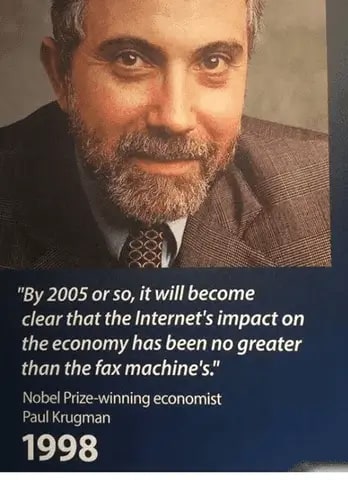
As you can see in the image above, he claimed that the internet’s impact on the economy would be no greater than that of the fax machine.
Epic fail!
This is a prime example of the absurdities that fiat economists often spout about new technologies; their future predictions can be skewed by the unconscious bias of sunk costs.
Paul has been criticizing Bitcoin since 2013 and has consistently been wrong. Remember, this was when Bitcoin was valued at less than $100!
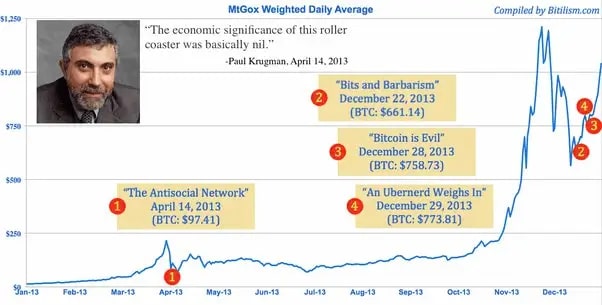
The energy he spent attacking Bitcoin could have been used to invest and earn substantial returns, enhancing his reputation as a visionary by challenging the prevailing economic views.
Unfortunately, he made the same mistake with Bitcoin that he made with the internet.
3. Assigning Utility to Transactions
The third foolish mistake with Bitcoin is assigning utility to the transaction or purchase. This error stems from associating feelings of pleasure or pain with the act of buying or selling Bitcoin, which can lead novices to value the currency based on their emotions during transactions.
For instance, many considered Bitcoin overpriced at $30 in 2011 and felt satisfaction upon selling. However, by not fully grasping Bitcoin’s intrinsic properties, they underestimated its potential for appreciation and sold prematurely.
There are countless reports of people who celebrated selling their Bitcoin at $30, only to later regret it as the price soared. These same people deemed Bitcoin overpriced at $450 in 2015, at $19,000 in 2017, and continue to think so now, even as it approaches $65,000. This recurring pattern stems from focusing solely on price without understanding Bitcoin’s fundamental role and potential in the evolving financial landscape.
The dopamine from short-term volatility can cause people to lose focus, feel pleasure or pain, trade impulsively, and let emotions, not rational thinking, guide their decisions about Bitcoin.
Bitcoin operates on an exponential scale, a concept challenging for humans to grasp, leading to mental confusion. This is why many become addicted to trading, spurred by the short-term release of dopamine. Viewing movements on a logarithmic scale clarifies Bitcoin’s direction and the involved timeframe.
Many make the error of not investing in Bitcoin, opting instead for less promising alternatives because they initially misunderstood how to evaluate Bitcoin. They feel pleasure buying seemingly cheap and promising altcoins, yet experience pain holding Bitcoin during a bear market when they should be accumulating.
None of this makes sense.
Viewing Bitcoin only as a speculative asset due to its volatility is the greatest mistake one can make. It means missing the chance to build generational wealth simply because you assume you know Bitcoin’s final price and believe it won’t rise as it has in the past.
The phrase “slowly and then suddenly” illustrates that exponential movements happen when least expected. In reality, no one knows Bitcoin’s final price, especially given the potential collapse of infinite fiat currency.
Understanding this inversely proportional relationship is the first step.
4. Mental Accounting
Here comes the fourth foolish mistake people make with Bitcoin: mental accounting. This occurs when individuals categorize money into imaginary compartments/categories in their minds.
It’s a blend of neuroeconomics, where you start treating money differently. Even though 100 dollars are equivalent to another 100 dollars, and 1 BTC is equal to 1 BTC, the value you assign can vary depending on the effort it took to earn that 1 BTC.
This phenomenon is significant, as many who earned Bitcoin in 2011 ended up losing it.
I myself have given satoshis to friends to enhance their understanding of Bitcoin, and most lost access to their wallets and keys, despite thorough instructions and clear explanations.
In other words, this happened because I gave them Bitcoin for free, out of friendship, and they didn’t value it. It’s a classic example of “easy come, easy go.”
Conversely, those who work hard, save every satoshi and take good care of their holdings value them more because of the effort they invested in accumulating and safeguarding them.
This is why 20% of BTC is lost. In the early days of the network, from 2009 to 2013, many did not realize the value of what they had and lost private keys, left them on exchanges, or were hacked.
Mental accounting is related to the value you assign, not the asset’s actual value.
Many still dismiss Bitcoin today because they don’t see its value. However, history has shown that all those who dismissed Bitcoin eventually returned, regretting their earlier disdain.
Michael Saylor
And it may seem unbelievable, but this even happened with Michael Saylor himself. Who would have thought?!
He once stated that Bitcoin’s days were numbered and that it was only a matter of time before Bitcoin met the same fate as online gambling.
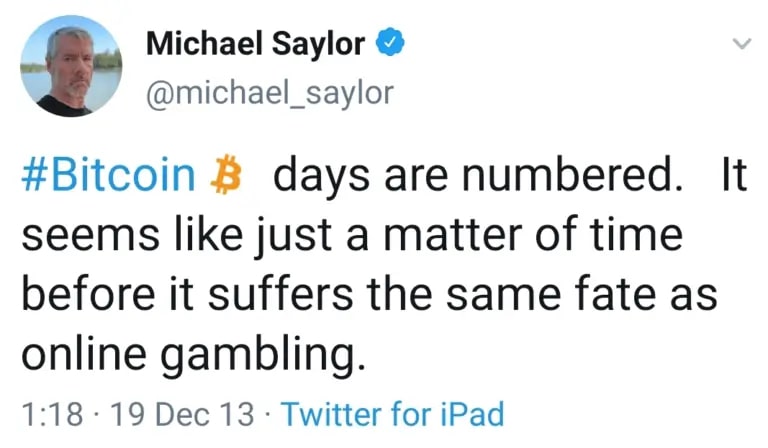
This was back in 2013, and look how wrong Saylor was. Now, he is compensating for lost time as one of the CEOs who most believes in Bitcoin.
Mental accounting also causes people not to realize that fiat money is like an ice cube losing value, whereas Bitcoin is the opposite. It is a form of money that appreciates over time.
There is so much resistance within the fiat mindset that people consider fiat money safer and more valuable simply because it is the money they are familiar with. In reality, it is the riskiest money because it will certainly continue to depreciate, while Bitcoin, despite its volatility, has consistently gained value.
Mental accounting does not assess reality but skews the perception of value not based on data and facts but on what feels more familiar or “safer.”
It is irrational behavior.
5. Overconfidence
The fifth foolish mistake related to Bitcoin is overconfidence. This can appear in various forms: neglecting proper security for key storage, leaving funds on exchanges, or investing too hastily without strategic planning. Such carelessness often forces investors to sell Bitcoin at a loss during emergencies.
Given Bitcoin’s volatility, it’s crucial to be well-organized, ready to handle the responsibilities of being your own bank, and equipped to deal with life’s unexpected challenges.
Overconfidence often comes from naivety in future planning and underestimating the need for effective management skills.
Bitcoin requires a high level of organization, low time preference, long-term vision, and preparation for short-term contingencies.
This is particularly important as hyperbitcoinization has not occurred yet, and the world still primarily operates in fiat currencies. Knowing how to effectively navigate these two worlds in turbulent times is vital for proper management of your accumulated satoshis.
I hope you found this article helpful and that it assists you in avoiding these common Bitcoin foolish mistakes.
See you next time, and opt out!
Share on your social networks:

Founder of Area Bitcoin, one of the largest Bitcoin education projects in the world, she is a marketer, passionate about technology, and a full-time hands-on professional. She has participated in major Bitcoin conferences such as Adopting Bitcoin, Satsconf, Surfin Bitcoin, and Bitcoin Conference.
Did you like this article? Consider buying us a cup of coffee so that we can keep writing new content! ☕




